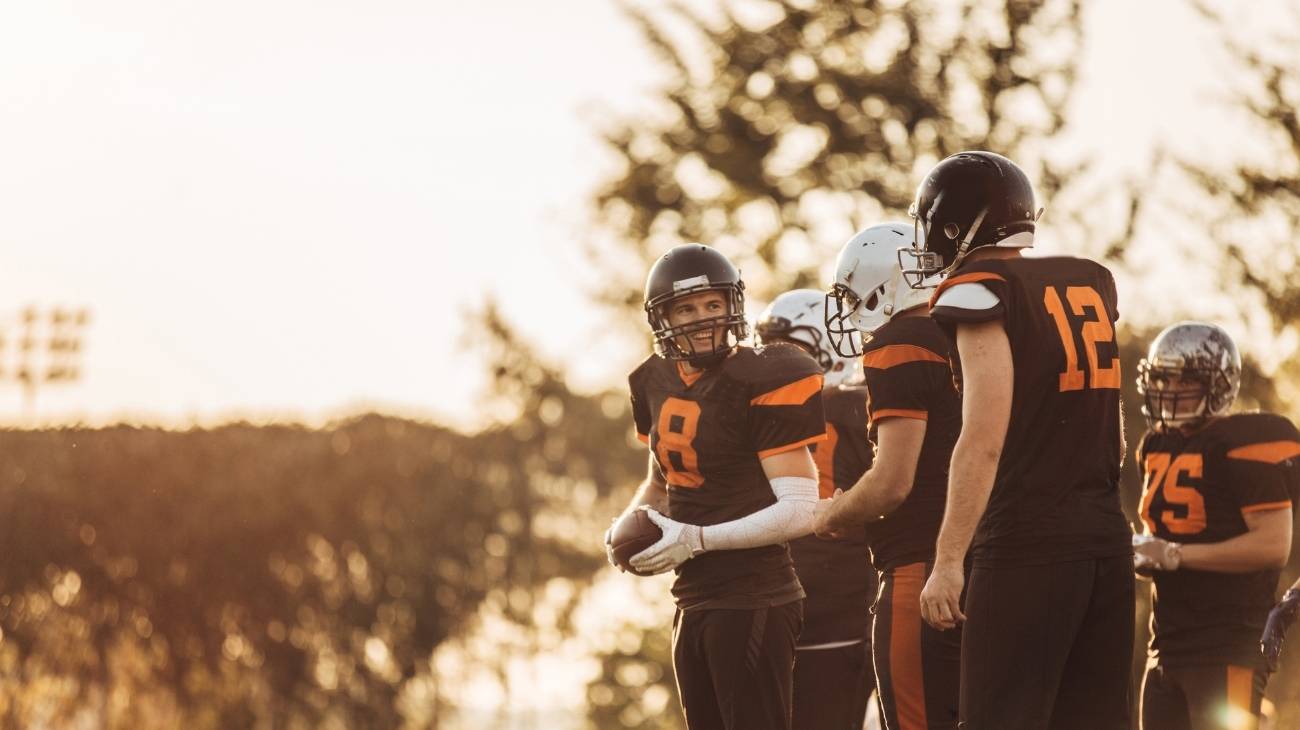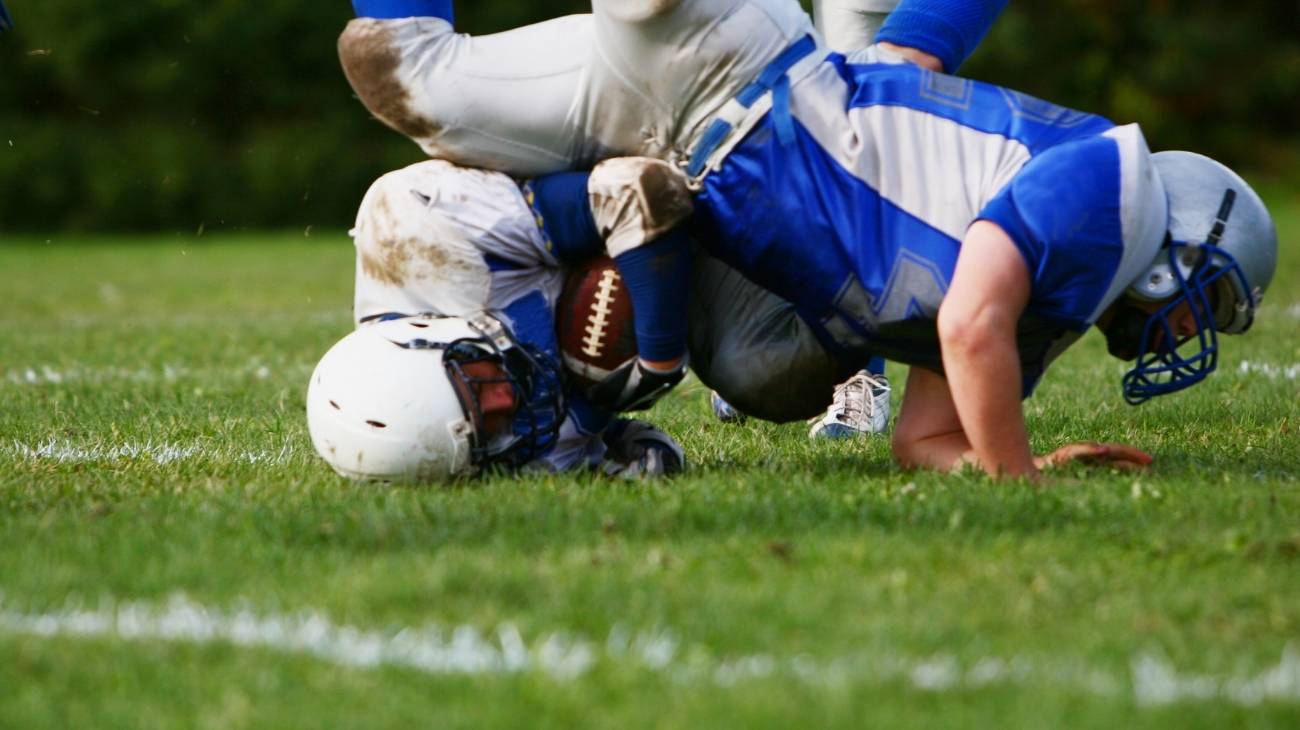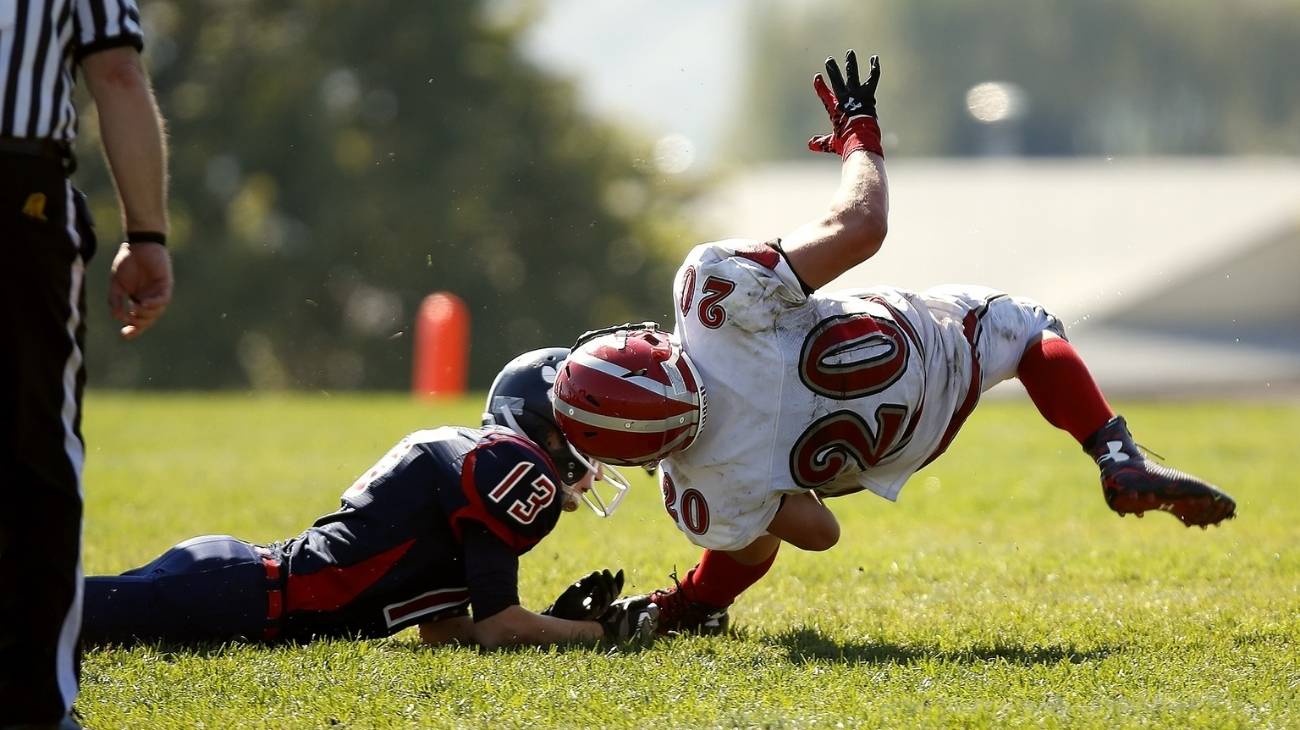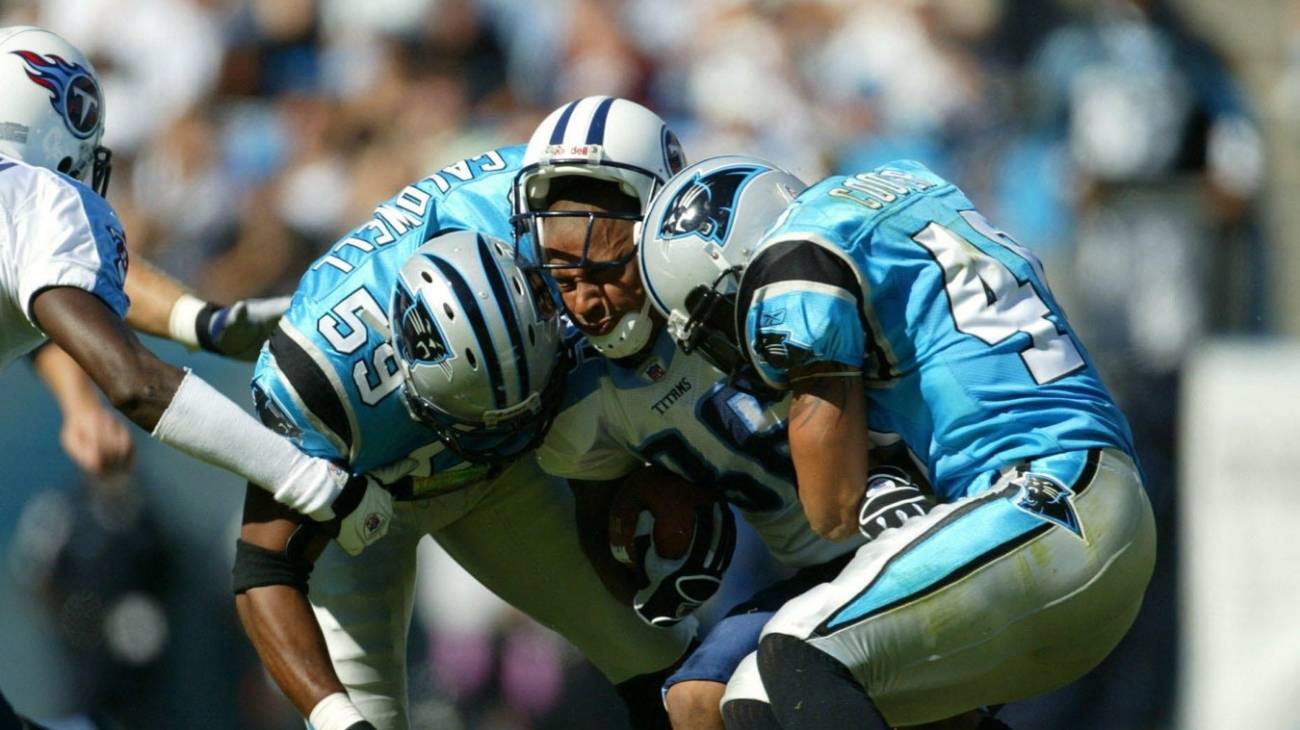The passion for football is demonstrated in the stands and on the field. It is a favorite sport in the United States and Canada, but in terms of injuries, it is considered a high-impact discipline because of the heavy collisions between players, spectacular falls and overloading of the musculoskeletal system.
Clarify your doubts about the most frequent knee injuries and the main reasons that cause them. In addition, you will learn how to use the PRICE therapy in case of minor injuries and which are the best products on the market to address soft tissue discomfort.
What are the most common types of knee injuries when playing football?
The knee is a double joint that allows part of the mobility in the body, with flexions and extensions of 130° and rotations between the joint and the tibia of 14°, depending on the position of the leg. Because of these characteristics, the knee is susceptible to the intensity of football.
Medial Collateral Ligament Injury
Although ligaments are strong and resilient structures, the intensity of football is capable of tearing any tissue when players exceed their physical limits. One of the most frequent injuries is the rupture of the medial collateral ligament, this ligament prevents the tibia from moving freely and in any direction.
The ligament is broken partially or totally if the player receives a strong blow on the side of the joint, it is also damaged if a fall is suffered and the body falls to the ground on its side. Not always the cause is a fall, when the body turns abruptly there may be a tear in part of its fibers.
The injury is also presented by wear of the ligament, this occasionally occurs with the years of training and matches, usually there are initial signs that indicate the weakening of this tissue.
As this ligament connects the femur to the tibia, it is likely that when there is an injury there will be pain in the joint and in the parts closest to it. If a total rupture is diagnosed, then the most recommended procedure is surgery in which several cuts are made and the ligament is reattached.
Cruciate ligament injury
Each knee has an anterior and a posterior ligament, although in football the highest incidence of injury occurs in the anterior cruciate ligament. The greatest cause of damage is generated by collisions between players from the front or from behind. After the impact, the body tries to stabilize itself and the abrupt movements end up breaking the ligament.
Another cause of injury is when the knee is flexed and the body rotates while the foot remains fixed on the ground, a scenario that fits in football when the player looks for the ball or tries to dodge the tackling of opponents. Both ligaments also wear out from overuse, and while the most damage from fatigue and wear and tear occurs in practice, the trigger usually comes in games.
In the NCAA alone, which encompasses college teams in the United States, more than 40,000 injuries are reported each year. For every 1,000 hours of training and games, a player can have up to 30 lower extremity injuries of different types. Despite all the extra protection players have, they are not exempt from injury.
Meniscus tears
Although these injuries are age-related, in football they are caused by excessive stress and weight on the knee, sudden twists of the body after stops and starts, and trauma during games. The tear and rupture of any of the two menisci in each knee is recorded in the heart of this structure. They are degenerative injuries because they are composed of a variant of cartilage and these do not have the possibility of regenerating on their own.
Once the meniscus is injured, it is necessary to rest and to carry out physiotherapy to try to recover the strength and stability lost. When the tear is total, the meniscus is replaced by a substitute of biocompatible material with the organism. As the knee only allows a rotation of 14°, when the body exceeds this limit the meniscus suffers and in the first injuries the damage can be repaired.
Knee sprain
The main causes of sprains are the wear and tear of the muscular structures that force the workload to be distributed on the tendons and ligaments. Irregular sprains in the knee injure all the ligaments to the point of causing a sprain, an excessive elongation that causes pain and inflammation.
There are three types of sprains: the first is similar to a simple sprain, usually does not require immobilization of the knee, but it does require the person to rest using the PRICE therapy that you will learn in this article.
In second and third degree sprains it is necessary to immobilize the leg for several weeks until the damaged fibers are completely regenerated. During a sprain, a sharp, stabbing pain radiates into the thigh extremity.
Third degree sprains involve total rupture of the affected ligament, only a surgeon or traumatologist will assess whether surgical intervention by arthroscopy or open surgery is necessary.
Dislocations and fractures
These are the most serious injuries a football player can suffer. In dislocations one of the bones of the joint (usually the tibia) comes out of its usual place partially or totally, in both cases the relocation of the bone is applied manually to achieve relief.
Dislocations, as dislocations are also known, are generated by trauma due to blows and falls of the players. A deformity is seen in the knee, there is intense pain and the person cannot make any movement until the bone is relocated.
When the blows are extremely strong, then fractures occur. These can be in the form of fissures and in the form of a puzzle. When the pieces of a bone become loose, they can affect the function of other tissues such as muscles, tendons and ligaments, and in some fractures the bone even comes out of the skin.
Whenever a fracture damages tissue, it must be repaired by open surgery. On average, recovery from an open fracture can take up to six months if the person's intention is to return to the games. This is only possible through a long period of physiotherapy and then a gradual return to training.
Best products for football knee injury recovery
Bestseller
-
2 Knee Compression Sleeve (Black/Gray)
$19.95 -
2 Knee Compression Sleeve (Green/Navy)
$19.95 -
2 Knee Compression Sleeve (Pink/Bordeaux)
$19.95 -
2 Patella Knee Strap (Black/Gray)
$14.95 -
2 Patella Knee Strap (Green/Navy)
$14.95 -
2 Patella Knee Strap (Pink/Bordeaux)
$14.95 -
Heating Pad for Microwave Classic Bottle Shaped (Hearts)
$19.95 -
Heating Pad for Microwave Classic Bottle Shaped (Oxford)
$19.95 -
Heating Pad for Microwave Classic Bottle Shaped (Sport)
$19.95 -
Microwave Heating Pad for Back Pain Relief (Extra Large) (Hearts)
$29.95 -
Microwave Heating Pad for Back Pain Relief (Extra Large) (Oxford)
$29.95 -
Microwave Heating Pad for Back Pain Relief (Extra Large) (Sport)
$29.95 -
Microwaveable Heating Pad for Pain Relief (Hearts)
$19.95 -
Microwaveable Heating Pad for Pain Relief (Oxford)
$19.95 -
Microwaveable Heating Pad for Pain Relief (Sport)
$19.95
How to apply the RICE therapy to treat knee injuries in football players?
The PRICE therapy is an update of RICE, as this set of steps has been known since the 1970s. It is widely known in the sports world for its immediate effect on minor injuries.
- Protection: A good knee protection consists of bandaging the joint, avoid putting too much pressure on it, thus reducing the movements of the limb.
- Rest: From the first moment of the injury, as it is the knee, the person must remain lying down and avoid movement for 48 and 72 hours while you notice improvements. The damaged cells will not begin to regenerate as long as there is no good rest of the affected limb.
- Ice: Try to use ice on the knee with the support of a thermal bag or a handkerchief. If you try to place the ice directly on the skin you will only cause first degree burns. Ice has an incredible analgesic and anti-inflammatory effect, but its use on the knee should not exceed 20 minutes, then you should give a break of another 10 minutes.
- Compression: The best way to provide compression is with a knee brace, they come with the ideal tension and factory default. If you do not have a knee brace, then you should have an elastic bandage on hand to cover the entire knee. When you feel a tingling in your leg, it is because the bandage is too tight.
- Elevation: During the first two days you should try to keep the limb elevated, this will help to improve the impact of ice, rest and compression. This step turns gravity into an ally and helps to reduce swelling and possible edema by reducing blood flow.
References
- Rothenberg, P., Grau, L., Kaplan, L., & Baraga, M. G. (2016). Knee injuries in American football: an epidemiological review. Am. J. Orthop, 45(6), 368-373. https://cdn.mdedge.com/files/s3fs-public/ajo045090368.PDF
- Pietrosimone, B. G., Grindstaff, T. L., Linens, S. W., Uczekaj, E., & Hertel, J. (2008). A systematic review of prophylactic braces in the prevention of knee ligament injuries in collegiate football players. Journal of athletic training, 43(4), 409-415. https://meridian.allenpress.com/jat/article/43/4/409/110714/A-Systematic-Review-of-Prophylactic-Braces-in-the
- Cahill, B. R., & Griffith, E. H. (1978). Effect of preseason conditioning on the incidence and severity of high school football knee injuries. The American journal of sports medicine, 6(4), 180-184. https://journals.sagepub.com/doi/abs/10.1177/036354657800600406
- Sitler, M., Ryan, C. J., Hopkinson, L. W., Wheeler, L. J., Santomier, J., Kolb, L. R., & Polley, C. D. (1990). The efficacy of a prophylactic knee brace to reduce knee injuries in football: a prospective, randomized study at West Point. The American journal of sports medicine, 18(3), 310-315. https://journals.sagepub.com/doi/abs/10.1177/036354659001800315
- Loughran, G. J., Vulpis, C. T., Murphy, J. P., Weiner, D. A., Svoboda, S. J., Hinton, R. Y., & Milzman, D. P. (2019). Incidence of knee injuries on artificial turf versus natural grass in National Collegiate Athletic Association American Football: 2004-2005 through 2013-2014 seasons. The American journal of sports medicine, 47(6), 1294-1301. https://journals.sagepub.com/doi/abs/10.1177/0363546519833925
- Saal, J. A. (1991). Common American football injuries. Sports medicine, 12, 132-147. https://link.springer.com/article/10.2165/00007256-199112020-00005
- Kelly, B. T., Barnes, R. P., Powell, J. W., & Warren, R. F. (2004). Shoulder injuries to quarterbacks in the national football league. The American journal of sports medicine, 32(2), 328-331. https://journals.sagepub.com/doi/abs/10.1177/0363546503261737
- Pellman, E. J., Viano, D. C., Casson, I. R., Arfken, C., & Powell, J. (2004). Concussion in professional football: Injuries involving 7 or more days out—Part 5. Neurosurgery, 55(5), 1100-1119. https://journals.lww.com/neurosurgery/Abstract/2004/11000/Concussion_in_Professional_Football__Injuries.14.aspx
- Bradley, J. P., Klimkiewicz, J. J., Rytel, M. J., & Powell, J. W. (2002). Anterior cruciate ligament injuries in the National Football League: epidemiology and current treatment trends among team physicians. Arthroscopy: The Journal of Arthroscopic & Related Surgery, 18(5), 502-509. https://www.sciencedirect.com/science/article/abs/pii/S0749806302348588
- Brophy, R. H., Wright, R. W., Powell, J. W., & Matava, M. J. (2010). Injuries to kickers in American football: the National Football League experience. The American journal of sports medicine, 38(6), 1166-1173. https://journals.sagepub.com/doi/abs/10.1177/0363546509357836









































